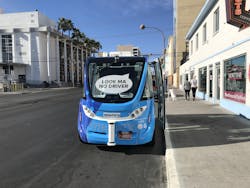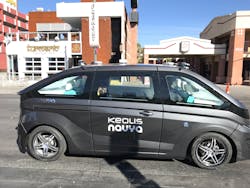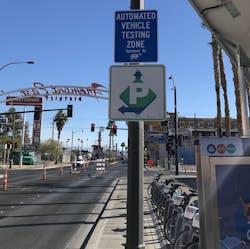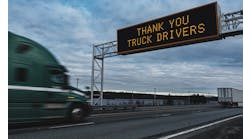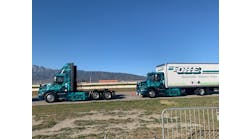With my hotel room not yet ready, I take a ride to Fremont Street in downtown Las Vegas.
I’m here for this week’s CES show, where numerous autonomous driving announcements are expected. With a few hours to kill, my goal is to take a ride on the driverless shuttle bus.
Sponsored by AAA and operated by Keolis, the electric shuttle got off to a rocky start in November, when it was involved in a minor accident on the first day. The incident was blamed on a delivery driver, who backed into the shuttle.
Since that day, everything has been smooth, and ridership has grown to about 1,000 people a week, Maurice Bell, vice president of mobility solutions for Keolis, told Fleet Owner. That is until the morning I arrived, hoping to catch the first shuttle at 11 a.m. After 30 minutes of waiting with other would-be passengers, we were informed there was a maintenance issue.
While the problem was being investigated by an on-site team and via a control center in Lyon, France, Bell suggested two potential culprits.
First were the additional orange cones that popped up along the shuttle’s route ahead of the expected surge in passenger and vehicle traffic from the CES show.
He also pointed out this was the very first time the shuttle was sharing the route with the Autonom driverless taxi. The “robo taxi” is a project of Keolis and Navya, with rides being offered during CES. It was initially launched in Paris in November.
During my wait for the shuttle, I observed the Autonom successfully take about six laps around the route, which includes numerous traffic lights, stop signs, and right turns. Several people chuckled at how slow it was traveling, unable to grasp the enormity of what they were witnessing.
Bell suggested having the taxi on the route could be creating some cross signals for the shuttle. He added the technological advancements on the taxi in the year since the shuttle was developed are nothing short of stunning.
In the end, I waited about almost two hours before departing without taking a ride. It did appear the shuttle was close to being operational when I left, and I hope to have a chance to take my ride in the coming days.
It was a disappointing afternoon, but served as a valuable reminder how fast things are progressing, as well as and just how much discovery and testing remains.

